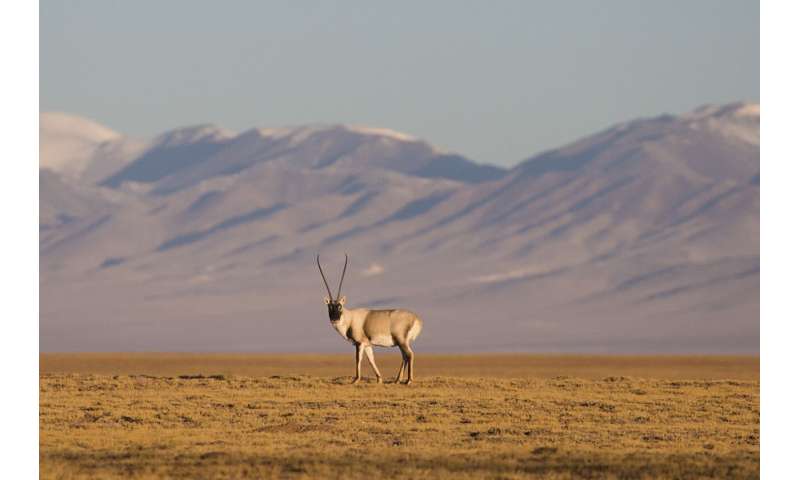#Tibetan antelopes developed a unique way to survive high in the mountains
“#Tibetan antelopes developed a unique way to survive high in the mountains”

A team of researchers at the University of Nebraska’s School of Biological Sciences has found that Tibetan antelopes evolved in a unique way to survive high in the mountains. In their paper published in the journal Science Advances, the group describes their genetic analysis of the high-altitude Tibetan antelope and what they learned about its genetic evolution.
The Tibetan antelope lives, as its name implies, in the Tibetan plateau, which lies between the Himalayan mountain range and the Taklamakan Desert—elevations there reach 3,600 to 5,500 meters above sea level. At such heights, the oxygen pressure is two times lower than that at sea level. Animals that live at such elevations have evolved to survive on less oxygen. The Tibetan antelope has clearly evolved to thrive in such an environment—some have been seen to run as fast as 70 kilometers/hour in the thin air and to keep it up for distances of 100 kilometers. In this new effort, the researchers sought to learn more about how the Tibetan antelope has evolved to live in such an environment.
The work involved characterizing the locus of β-globin genes (globins are heavily involved in transporting oxygen in the blood). In so doing, they found two variants that were similar to those in cows. But when comparing the two species, the researchers found that the antelope lost the βA variant (the most common one in mammals) during its evolutionary history. That left it without an adult form of hemoglobin. Instead, the antelope relies on a childhood form of the protein. Many mammals have a childhood form of globin (βF)—it expresses an isoform with higher oxygen affinity than the adult version, allowing for the smooth transfer of oxygen across the placenta. The Tibetan antelope is now the only mammal known to use βF as a means of high-altitude survival as an adult. The researchers tested how well βF was working for the antelope by conducting in vitro experiments—they found that it allowed for higher oxygen affinity than any other bovid, and explains how the antelope is able to thrive at such high altitudes.
More information:
Anthony V. Signore et al. Biochemical pedomorphosis and genetic assimilation in the hypoxia adaptation of Tibetan antelope, Science Advances (2020). DOI: 10.1126/sciadv.abb5447
© 2020 Science X Network
Tibetan antelopes developed a unique way to survive high in the mountains (2020, June 18)
retrieved 18 June 2020
from https://phys.org/news/2020-06-tibetan-antelopes-unique-survive-high.html
This document is subject to copyright. Apart from any fair dealing for the purpose of private study or research, no
part may be reproduced without the written permission. The content is provided for information purposes only.
If you want to read more Like this articles, you can visit our Science category.
if you want to watch Movies or Tv Shows go to Dizi.BuradaBiliyorum.Com for forums sites go to Forum.BuradaBiliyorum.Com




